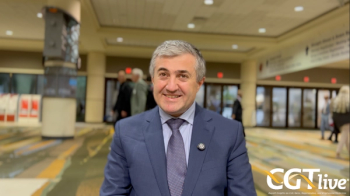
Rebecca Cottman, PhD, on Enhancing Cell Therapy Cytotoxicity With a Regulated Gene Circuit
The scientist at Senti Biosciences discussed preclinical research presented at ASGCT 2023.
“We validated that all of the ERT2 variants we engineered and put into our transcriptional switches demonstrated maintained insensitivity to estradiol. So we know that it is safe and can be used across a wide range of the population... There's been so many cases in drug development, where I feel like certain populations haven't been considered in the development of that particular therapy. And we're definitely trying to be as inclusive and make sure that this we're designing this to be safe for everyone. And we're excited excited about the potential applications in a host of other primary cells.”
Senti Biosciences is developing a gene circuit using tamoxifen metabolites (endoxifen) that is able to induce robust, controllable expression of interleukin-12 (IL-12) in the brain and other tissues. The research is meant to address the need for enhancing tumor cell cytotoxicity of chimeric antigen receptor (CAR) T-cell therapies without high levels of toxicity that often result with the use of cytokines such as IL-12 alone.
Preclinical, proof-of-concept data were presented by Rebecca Cottman, PhD, scientist, Senti Biosciences, at the
REFERENCE
Cottman R, Johnson V, Hung M, et al. Engineering Pharmacologically Relevant, FDA-Approved Small-Molecule-Regulated Gene Circuits for Therapeutic Applications in the Brain. Presented at: ASGCT 2023 Meeting; May 16-20; Los Angeles, California. Abstract #150
Newsletter
Stay at the forefront of cutting-edge science with CGT—your direct line to expert insights, breakthrough data, and real-time coverage of the latest advancements in cell and gene therapy.

















































